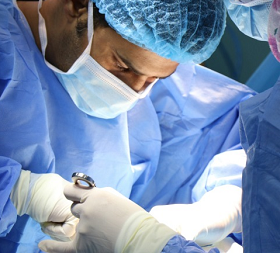Cloacogenic Carcinoma Symptoms, Causes, Diagnosis, Treatment
Cloacogenic carcinoma is a rare kind of anal carcinoma that can occur in patients who still have their cloacal membrane intact. Women are twice as likely as males to be affected by this illness. Cloacogenic carcinoma is diagnosed by doctors using a biopsy, imaging studies, and physical examination. Surgery, chemotherapy, targeted therapy, radiation therapy, and/or any combination of these may be used in the treatment of cloacogenic carcinoma.
Anal cancer is a type of malignancy that starts in the tissue of the anal canal, the small tube through which fecal matter exits the body. Cloacogenic carcinoma, which accounts for approximately 2 to 3 percent of anorectal carcinomas, is an extremely infrequent form of anal cancer.
The development of cloacogenic cancer begins with a fragment of the cloacal membrane, which is a thin skin flap developed during the formation of the urinary and reproductive systems and generally sheds before birth. This type of anal cancer is more likely to happen to people who still have the cloacal membrane.

Symptoms
It is critical to get an early diagnosis of cloacogenic cancer in order to have a better prognosis. Once metastases have developed in the regional lymph nodes, the outlook is very poor, and the tumor will quickly spread throughout the body. No distinctive symptoms are displayed by the individuals with these malignancies. Patients may have a variety of symptoms, including rectal bleeding, rectal pain, constipation, and a disruption in their normal bowel routine. Occasionally, hemorrhoidectomies or standard physical examinations reveal cloacogenic tumors in asymptomatic patients.
Causes
Cancerous cells in the anal canal are induced by genetic alterations (changes).
Your likelihood of acquiring cloacogenic carcinoma may be increased by one or more of the following factors:
- A smoking habit
- 50 years of age or older
- Being a woman
- Being a recipient of an anal sexual encounter
- Human papillomavirus (HPV) infection
- Having more than one sexual partner in your life
- Taking immunosuppressant drugs, for example after having an organ transplant
Diagnosis
Patients who have cloacogenic carcinoma do not exhibit any recognizable clinical symptoms, and the lesions do not have any distinguishing physical characteristics. However, the radiological appearance is quite typical, and early diagnosis of the tumor in the barium enema test is equally possible, provided that one is familiar with the tumor's minor but clear characteristics. Roentgenobogic appearance Because the prognosis is heavily influenced by the size of the tumor at the time it is found, early detection of the lesion and precise diagnosis are critical in order to improve the patient's chances of survival.
Treatment
The cloacogenic area of the anorectal junction is the origin of cloacogenic carcinoma, which is a form of cancer that occurs rarely. If it is not discovered and aggressive treatment is not started as soon as possible, this tumor has a very high risk of developing into a high-grade malignancy.
The treatment consists of an abdominal perineal resection, which includes a wide excision of the perianal skin and soft tissues, in addition to simultaneous lymphadenectomies of the inguinal and pelvic lymph nodes. The treatment strategy is expanded to include radiation therapy and chemotherapy if it is determined that any of the lymph nodes contain metastatic cancer.
 Reviewed by Simon Albert
on
August 16, 2022
Rating:
Reviewed by Simon Albert
on
August 16, 2022
Rating:











